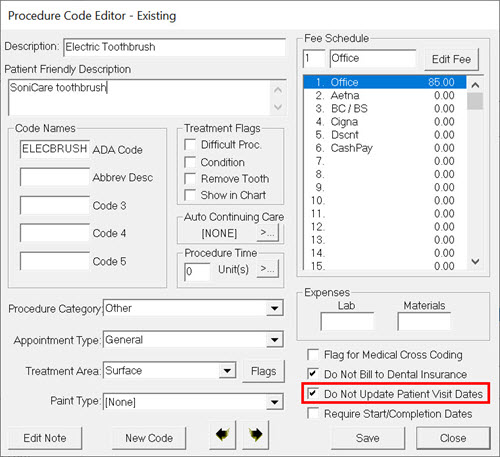The number of new patients and active patients you have in your office are very important numbers. They determine lots of things, including how many administrative team members you should have and how you should plan for practice growth.
Before using your new patient and active patient numbers to analyze any practice information, first you need to make sure that these numbers are accurate.
In Dentrix, the new patient numbers are calculated based on the patient’s First Visit Date, and the active patient numbers are based on the Last Visit Date. In order for reports to calculate these numbers correctly, it’s critical that the First and Last Visit Date are accurate in the patient’s Family File.

First Visit Date
The patient’s First Visit Date is determined by the date when you enter the patient into the Family File. Some offices don’t enter the patient into the Family File until the patient arrives for their first appointments, in which case the First Visit Date would be accurate. Other offices prefer to enter the patient into the Family File before the date of the first appointment so they can enter the patient’s insurance information. If this is the case in your office, I would recommend when you enter the patient into the Family File, you enter them with the status of non-patient; then, once they arrive for their appointment, you can change the status to patient, and enter their First Visit Date.
Last Visit Date
Dentrix assigns the Last Visit Date based on the last procedure posted in the patient’s Ledger. This means if you are posting procedure codes for a missed appointment or a purchased product, Dentrix will consider this an appointment and adjust the patient’s Last Visit Date. The way to avoid this would be to select Do Not Update Patient Visit Dates for those types of non-visit procedure codes in the procedure code setup in the Dentrix Office Manager.

Once you know your patient’s visit dates are being calculated accurately, you can find your active patient count in the Practice Advisor Report. By default, patients are counted in the active patient base if their last visit was within the last eighteen months.
When considering if you need to hire additional team members, consider that it typically takes one administrative team member approximately ten minutes to process a patient. Processing patients includes greeting them, checking them in and out, scheduling their next appointment, collecting payment, and submitting an insurance claim.
If you have two team members, one for check-in and one for check-out, it will take approximately five minutes for each team member to process the patient.
Administrative team members should also plan for half of the day to be allocated for non-patient facing tasks. For example, confirming appointments, answering phone calls, verifying insurance, following up on outstanding claims and filling cancellations.
This means if you have two administrative team members each working an eight-hour day, and they spend half their day processing patients and the other half performing non-patient-facing tasks, together those two team members could process 48 patients in a typical day.
Based on your active patient number and monthly new-patient numbers, you can determine if you have an adequate number of administrative team members to handle those patients or if you need to consider hiring an additional team member.
Before analyzing new patient and active patient numbers, and before making plans for staffing increases, make sure your patient numbers are accurate by training your team how to properly enter information into Dentrix so that First Visit and Last Visit Dates are recorded correctly.
Learn More
For additional information, read the following:
By Charlotte Skaggs, Certified Dentrix Trainer





